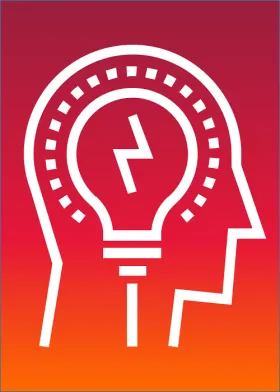When I am not studying businesses and working to encourage lean and agile principles, I read history and study the various forms of government societies have experimented with. Though politics is always a dangerous field to tread in I thought it would be fun to examine how the American experiment called the Constitution with the Bill of Rights has very many agile principles built into it. I will not hide my admiration for these documents as I am a big fan. I can see why America, the start-up, adopted agile principles at her founding more than 200 years ago, but am equally intrigued by how those principles continue to remain relevant (more now than ever) as our nation has continued to grow.
Decentralized decision making:
Our constitution is based on minimizing the role of a central government and moving decisions down to the states and local governments and ultimately to the citizens. The purpose of the constitution is to strictly limit what the Federal Government is permitted to do and everything else belongs to the states or to the citizens. This is explicitly stated in Amendment X[1]. Those things that are in scope of the federal government are those things that have an economy of scale, are infrequently changed or have a significant economic impact. The defense of the country, tariffs, interstate commerce, immigration, the post office, printing money, and patents.
Plan-do-check-adjust (PDCA) cycles:
Federalism is the governmental version of using a set based approach to solving problems. Hand in hand with the decentralizing of decision making is this concept that each state is its own experiment in democracy and self-government. Every state has its own constitution, court system and legislative powers. Most significant cultural issues are handled at the state and even local levels. This allows each state and municipality to decide what is best for them. Others can then study what they did and make their own laws or adapt similar laws. The entire country becomes a lab experiment on laws and their impact on their people and society.
Retrospectives:
Retrospectives are built into our process, elections every two years is an Inspect and Adapt activity. We inspect the politicians and the effectiveness of their work and make course corrections by tossing them out and replacing them with new ones. The expectation of the founders is that our members of congress were just average citizens who would spend a couple years in government and then return to their real jobs. Having career politicians was not in the original design.
Servant Leadership:
Again, this was the original intent. Politicians are meant to be serving the people, not the other way around. It was expected that they would return to private life and have to live with whatever laws they created and thus they would focus on laws that served the interests of their constituents and not for personal gain. But, the founders also recognized the weakness of human nature and created checks and balances to deal with those who would abuse their power.
Self-Empowered Teams:
It is clear the constitution was formed on the basis of the unalienable rights of the individual but it was also based on the right of individuals to freely form associations with any other individual(s) for whatever legal purpose. Alex de Tocqueville studied the American experiment in the 1830s and one of his key observations was how the American people formed associations to solve significant societal problems and did not look to their government to solve them for them[2].
The best solutions come from self-organizing teams:
The founders had a great deal of appreciation for the private sector. It is no coincidence that the Wealth of Nations was published at this time. This timeless book established the principles for a healthy free market and how a free market is the engine to wealth creation. No command and control model can begin to compete with the infinite individual transactions that make up a free economy. It is like Captain David Marquet says in his Ted talk, “135 thinking, active, passionate, creative, proactive, initiative taking people against 1 is a tidal wave[3].”
Welcome changes:
The constitution was designed to be amended as times and societal norms demand it. The founders recognized that the world is constantly changing, esp. technology as they were experiencing the start of the industrial revolution. They also knew that there were elements of the constitution that would need to be improved, in particular the elimination of slavery. They had no pretense that this was a perfect document and thus it has a self-correcting mechanism built into it, the amendment process.
Built on Collaboration:
As much as the constitution welcomes change the founders also recognized that the process of change needed to be arduous so that a mob majority could not arbitrarily change it to their advantage over all other constituents. The process requires considerable collaboration between competing interests in order to form a solution that satisfies most constituents. This is why federalism is so important, to minimize the number of issues that must be dealt with at the federal level where it is the most difficult to find consensus.
Built on principles:
Just as the Agile Manifesto has twelve principles the constitution is built on several foundational principles. The rights stipulated in our Bill of Rights are based on the recognition of the immeasurable value of each individual person, that each of us is due full respect and full protection under the law. It is also built on the recognition that we are all human, none divine, and our leaders are no better and are oftentimes worse than the rest of us. There must be guardrails on our leaders to keep them honest and working for the benefit of “We the People”. The less power we put in the hands of our leaders the less ability they have to abuse it.
I hope you found this entertaining and thought provoking. Hopefully you can see the common thread that makes me love both agile and our Constitution. Both are indeed grand experiments that look to lift us from stagnant systems and the status quo. But both also require us to remain engaged and active participants in protecting the principles while shaping how they evolve. Let us all work to live up to that promise that should resonate with all agilists.
Learn more about CGI's Agile solutions and methodologies
[1] Amendment X
The powers not delegated to the United States by the Constitution, nor prohibited by it to the States, are reserved to the States respectively, or to the people.
[2] AZQuotes.com The Americans make associations to give entertainment, to found seminaries, to build inns, to construct churches, to diffuse books, to send missionaries to the antipodes; in this manner, they found hospitals, prisons and schools. From Democracy in America.
[3] Inno-Versity presents: “Greatness” by David Marquet https://www.youtube.com/watch?v=OqmdLcyES_Q





